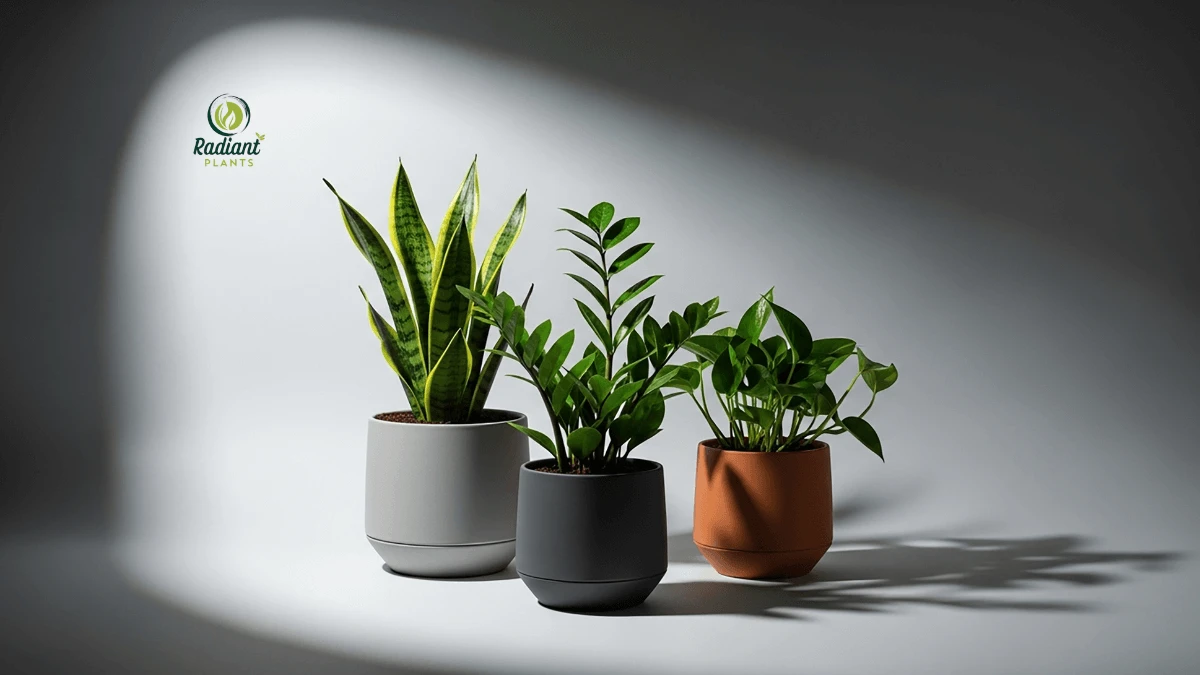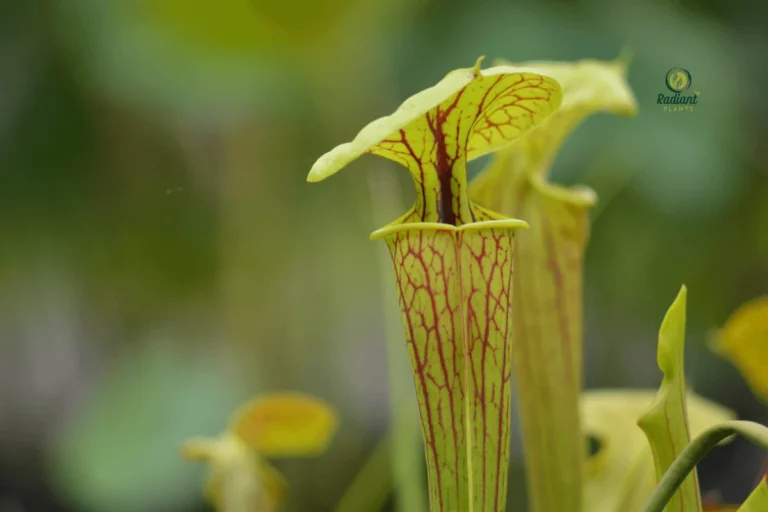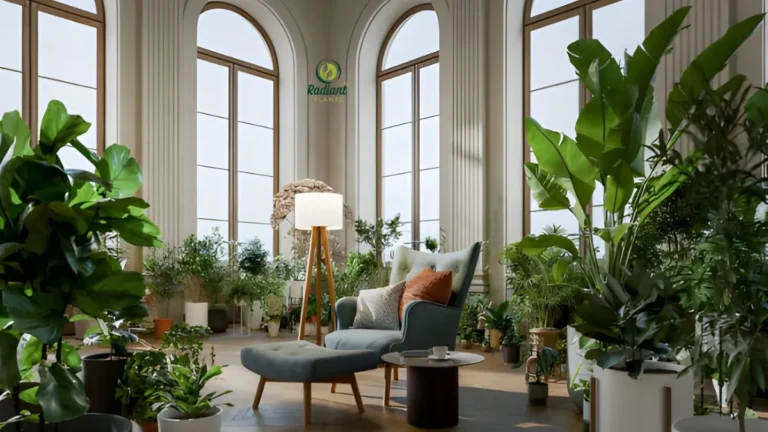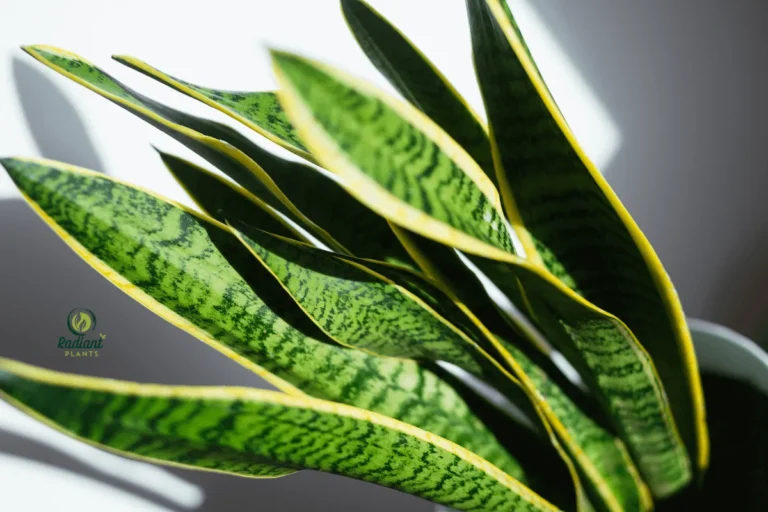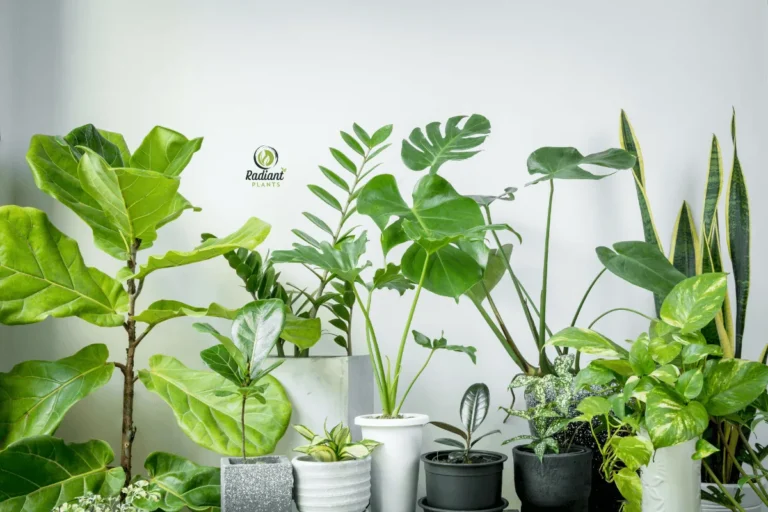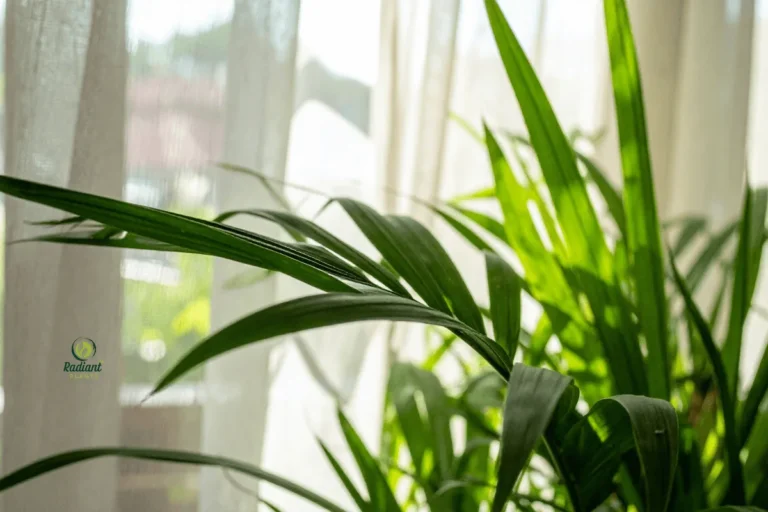Best Plants for Indoors With Little Light That Thrive Easily
The best plants for indoors with little light are hardy, low-maintenance varieties like snake plants, pothos, and ZZ plants that flourish without direct sun. According to the Royal Horticultural Society, these species adapt well to shaded spaces and help purify indoor air. Perfect for brightening dark corners, they thrive with minimal care.
Table of Contents
Table of Contents
Understanding Low Light Conditions
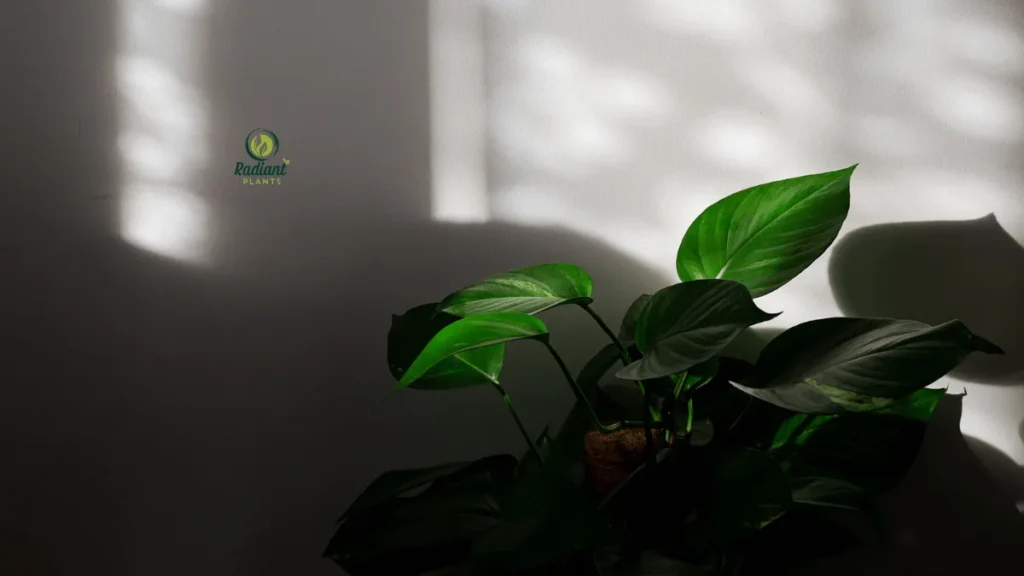
What “Low Light” Really Means for Plants
When we talk about the best plants for indoors with little light, “low light” doesn’t mean “no light.” Plants still require some level of illumination to photosynthesize, even if it’s minimal. In horticultural terms, low light typically refers to conditions ranging from 50 to 250 lux — about what you might experience in a room several feet away from a north-facing window or in a well-lit hallway.
The Royal Horticultural Society (RHS) defines low light as areas where you can read comfortably during the day without turning on artificial lighting. This could include:
- North-facing rooms with small or shaded windows
- Bathrooms or kitchens with frosted glass or minimal daylight
- Office spaces lit primarily by fluorescent or LED lighting
For context, a bright sunny window can exceed 10,000 lux, so 100 lux is a significant drop in energy for plants. That’s why only certain species — like snake plants, ZZ plants, or cast iron plants — have evolved to tolerate these dimmer environments.
Expert Tip: According to the University of Florida’s IFAS Extension, plants in low light conditions may grow slower and require less frequent watering, making them ideal for busy homeowners or office workers.
How to Assess Lighting in Your Home
Before choosing the best plants for indoors with little light, it’s important to evaluate your space objectively. Guessing can lead to poor plant performance, but a few simple tools and observations can help you get accurate results.
1. Use a Light Meter or Phone App
- Dedicated lux meters are inexpensive and accurate.
- Smartphone apps like Lux Light Meter or Light Meter – Lux & Foot Candle can provide a close estimate of your room’s light level.
- Aim to measure at the exact spot where you plan to place your plant.
2. Observe Natural Light Patterns
- Note which direction your windows face — north-facing windows generally provide the least light.
- Pay attention to obstructions such as nearby buildings, trees, or heavy curtains.
- Check how far into the room sunlight penetrates throughout the day.
3. Watch Your Current Plants’ Behavior
- Leggy growth, smaller leaves, and pale coloring can signal too little light.
- Conversely, scorched leaves in low-light plants could indicate they’re receiving too much direct sun for their tolerance.
4. Combine Artificial and Natural Light (If Needed)
- For truly dim corners, consider LED grow lights with a color temperature between 5,000–6,500K and a moderate PPFD (Photosynthetic Photon Flux Density) to mimic daylight without overheating the plant.
- The RHS notes that even short periods of supplemental light can improve plant health in marginal locations.
Trust Point: By measuring your home’s light conditions before buying plants, you increase the chances of long-term success and avoid the frustration of watching your greenery decline.
Best Plants for Indoors With Little Light – Top Picks
When selecting the best plants for indoors with little light, choose species proven to thrive in shaded rooms and tolerate occasional care lapses. The following plants are expert-approved for low-light conditions and have been recommended by the Royal Horticultural Society (RHS), NASA’s Clean Air Study, and university horticulture departments.
Snake Plant (Sansevieria trifasciata) – Hardy, Tolerates Neglect, Air-Purifying
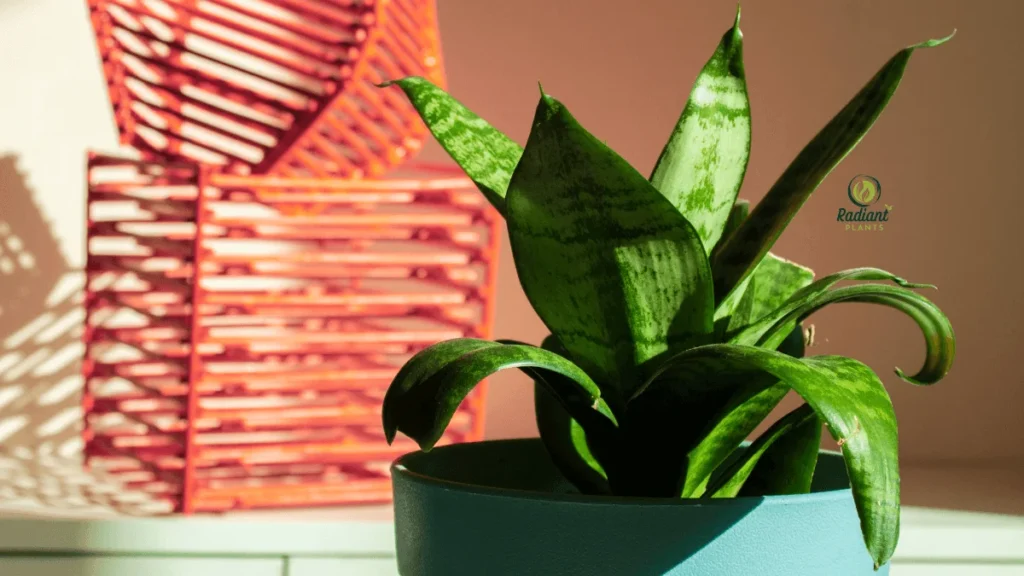
Snake plants are legendary for their durability. They can survive weeks without water and tolerate low-light areas where other plants fail. According to NASA’s Clean Air Study, Sansevieria effectively removes airborne toxins like formaldehyde and benzene.
Care Tips:
- Light: Low to bright, indirect light
- Water: Every 2–4 weeks; let soil dry completely
- Extra Benefit: Improves indoor air quality; perfect for bedrooms and offices
- Expert Note: “Snake plants are ideal for beginners and frequent travelers,” says Dr. Leonard Perry, University of Vermont Extension.
ZZ Plant (Zamioculcas zamiifolia) – Glossy Leaves, Drought-Tolerant
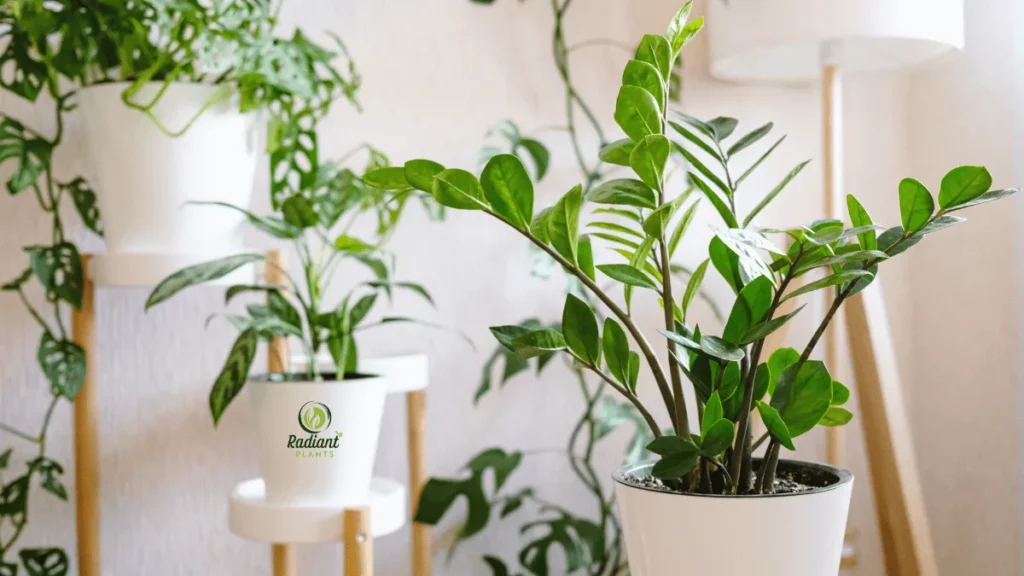
The ZZ plant thrives in neglect. Its thick rhizomes store water, making it highly drought-tolerant. It maintains lush, glossy foliage even in dim corners.
Care Tips:
- Light: Low to moderate indirect light
- Water: Once a month or when the soil is dry
- Extra Benefit: High tolerance for low humidity
- Expert Note: The RHS notes ZZ plants as “virtually indestructible” for low-light interiors.
Pothos (Epipremnum aureum) – Fast-Growing, Versatile Trailing Plant
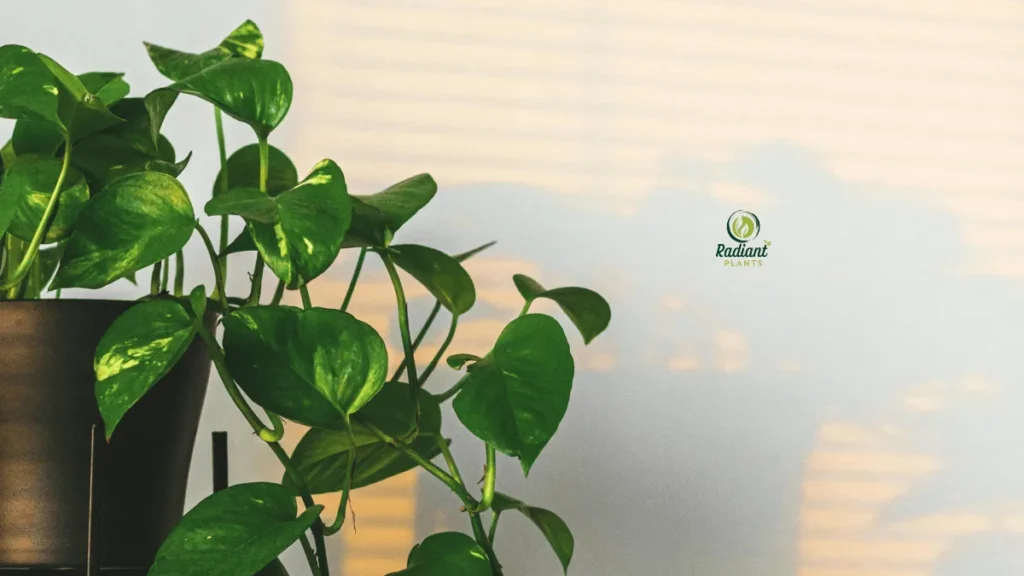
Pothos is adaptable and forgiving, with cascading vines that suit shelves and hanging baskets. It’s one of the easiest plants to propagate.
Care Tips:
- Light: Low to bright, indirect light
- Water: When top inch of soil is dry
- Extra Benefit: Filters indoor pollutants; rapid growth rate
- Expert Note: The University of Florida Extension highlights pothos as “one of the best starter plants” for new indoor gardeners.
Peace Lily (Spathiphyllum) – Shade-Loving, Occasional Blooms
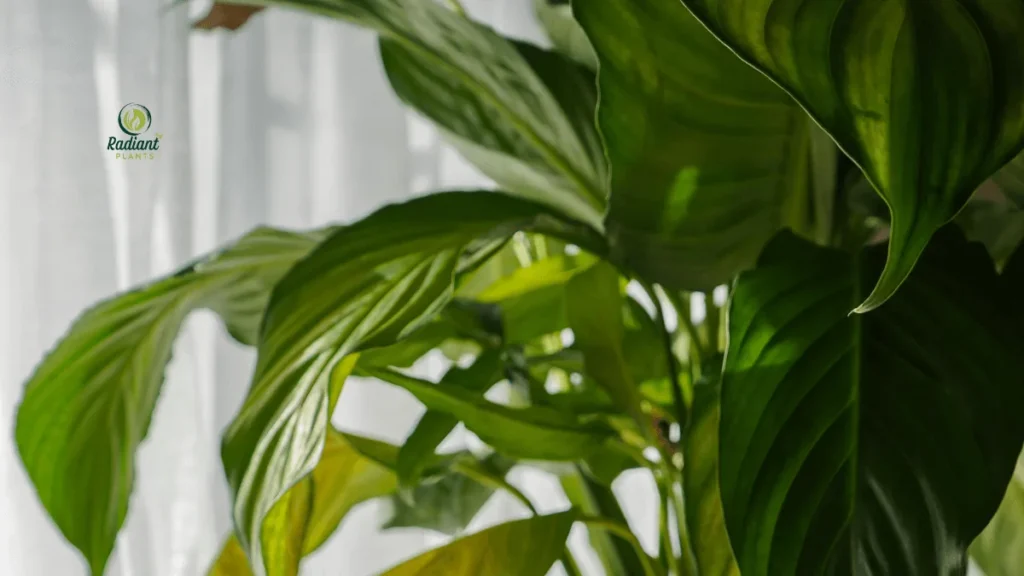
Peace lilies tolerate low light yet produce elegant white blooms when placed in brighter conditions. They also improve indoor air quality.
Care Tips:
- Light: Low to medium indirect light
- Water: Keep soil consistently moist but not soggy
- Extra Benefit: Recognized by NASA for air-purification
- Expert Note: Dr. Bill Wolverton, lead scientist on NASA’s plant study, praised peace lilies for toxin removal efficiency.
Cast Iron Plant (Aspidistra elatior) – Extremely Resilient, Low Water Needs
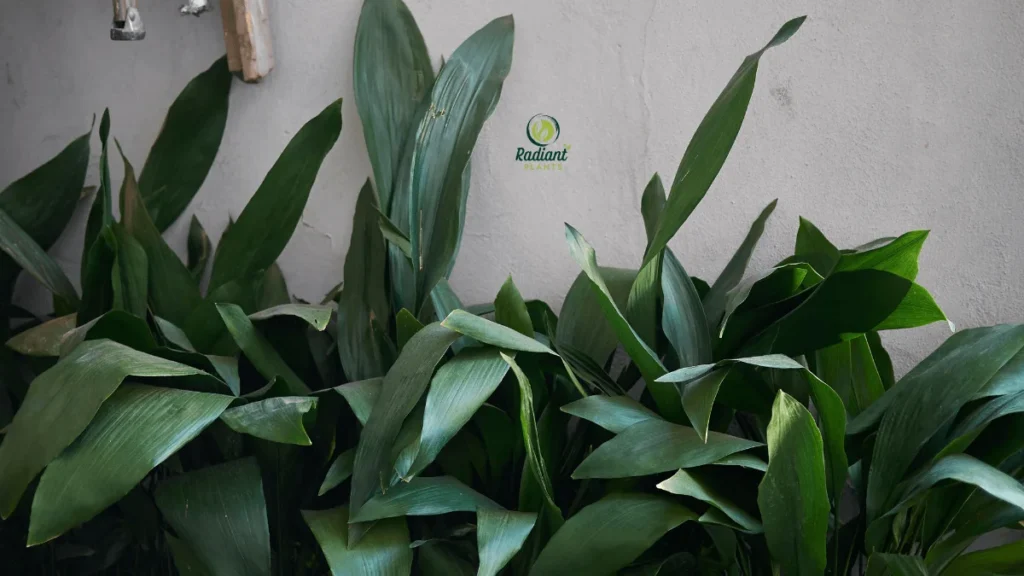
As its name suggests, this plant is nearly indestructible. It thrives in dim rooms, tolerates dust, and handles irregular watering.
Care Tips:
- Light: Low light, tolerates shade
- Water: Infrequently; allow soil to dry between waterings
- Extra Benefit: Long lifespan, even in poor conditions
- Expert Note: The RHS calls the cast iron plant a “stalwart for challenging indoor spaces.”
Philodendron – Multiple Low-Light Varieties, Easy to Grow
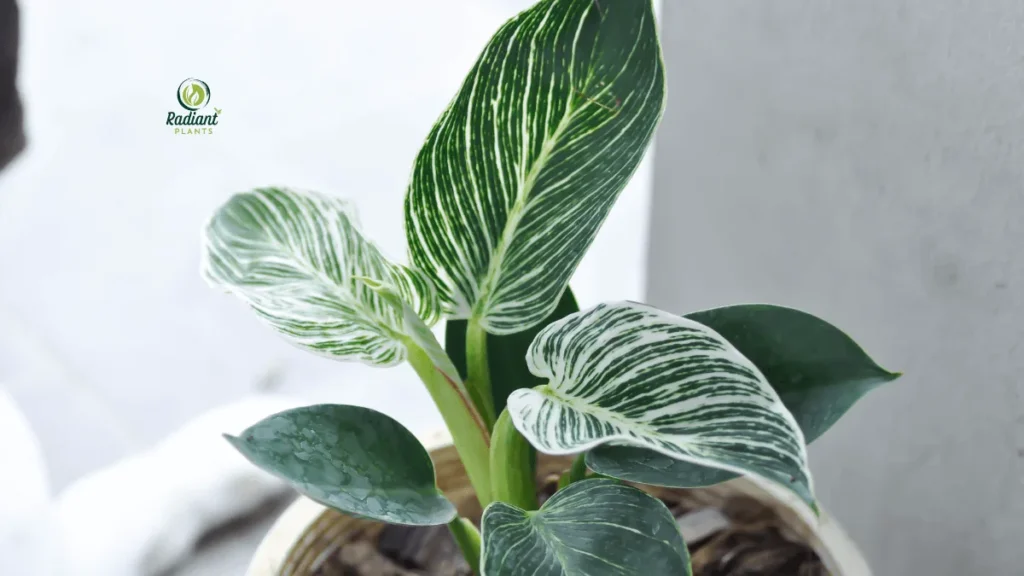
Philodendrons adapt well to low light and require minimal maintenance. Heartleaf varieties are especially popular for their trailing vines.
Care Tips:
- Light: Low to medium indirect light
- Water: When top inch of soil is dry
- Extra Benefit: Adds lush greenery quickly to any space
- Expert Note: The Missouri Botanical Garden lists philodendrons among the top low-maintenance indoor plants.
Chinese Evergreen (Aglaonema) – Colorful Foliage, Low Maintenance
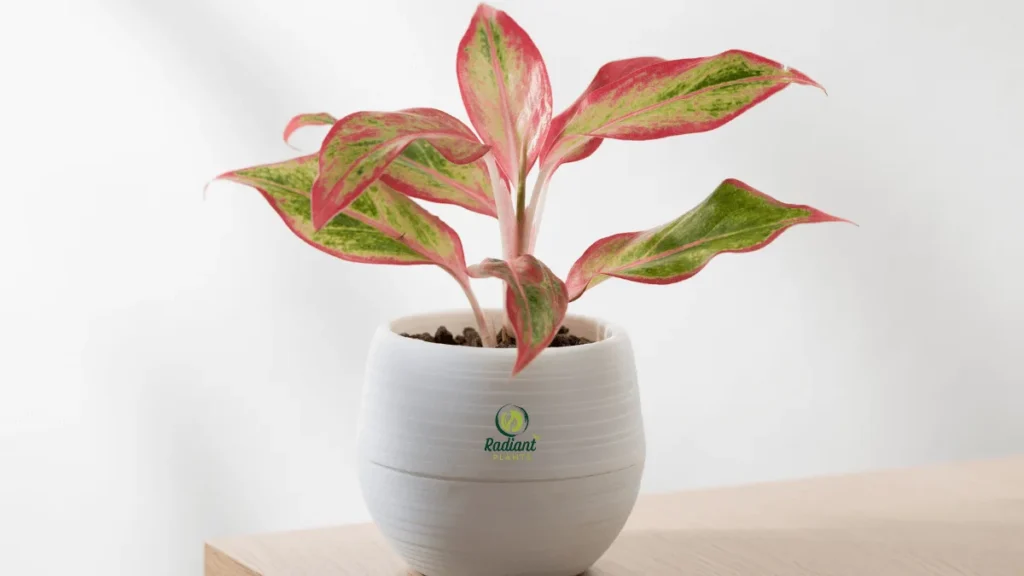
Chinese evergreens offer vibrant green, silver, or red-tinged leaves and can adapt to poor lighting conditions.
Care Tips:
- Light: Low to medium indirect light
- Water: Keep soil slightly moist; reduce in winter
- Extra Benefit: Decorative foliage brightens dark spaces
- Expert Note: Rated by the RHS as one of the easiest foliage plants for homes.
Parlor Palm (Chamaedorea elegans) – Compact, Ideal for Offices
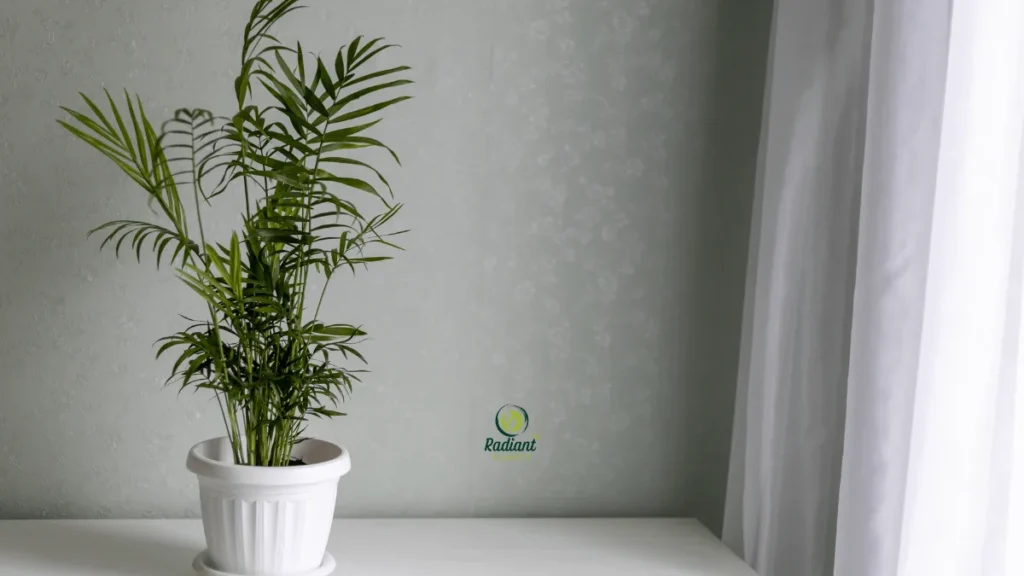
Parlor palms have been indoor favorites since the Victorian era, thriving in low-light rooms and compact spaces.
Care Tips:
- Light: Low to moderate indirect light
- Water: Allow soil to dry slightly between waterings
- Extra Benefit: Adds a tropical touch without high-light needs
- Expert Note: The University of Minnesota Extension lists parlor palm as an “excellent choice for dimly lit workspaces.”
For more detailed instructions on the best indoor plants for low light, check out this helpful resource:
➡️ How to Choose the Best Indoor Plants for Low Light.
How to Care for Low-Light Indoor Plants
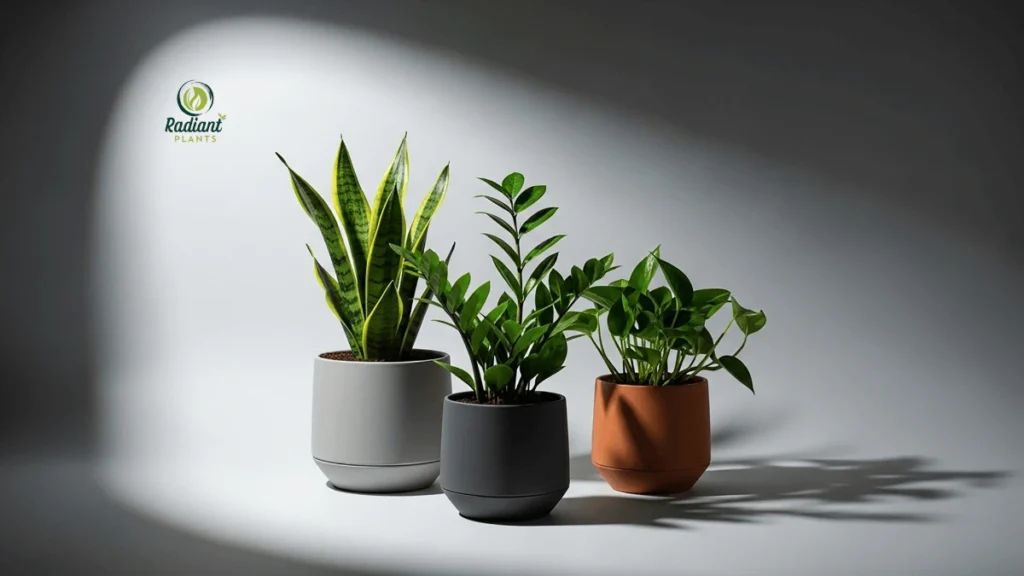
Even the best plants for indoors with little light need proper care to stay healthy and vibrant. While they can survive in dim environments, they still require thoughtful watering, the right soil, stable humidity, and occasional feeding. Following proven horticultural guidelines from institutions like the Royal Horticultural Society (RHS) and the University of Florida IFAS Extension ensures your plants thrive long-term.
Watering Guidelines – Avoid Overwatering
Overwatering is the most common cause of plant stress in low-light environments. Because light levels are lower, the soil dries more slowly, meaning roots are more susceptible to rot.
Actionable Tips:
- Check soil moisture before watering by inserting your finger 1–2 inches deep — water only if it feels dry.
- Use pots with drainage holes to prevent stagnant water.
- Reduce watering frequency during winter when plant growth slows.
- Watch for signs of too much water: yellowing leaves, a musty smell, or mushy stems.
Expert Note: The University of Vermont Extension advises that most low-light plants require watering only every 10–21 days, depending on indoor humidity and pot size.
Soil and Potting Mix – Well-Draining Options
The best plants for indoors with little light need soil that retains some moisture but drains well to avoid waterlogging.
Recommended Mix:
- Base: High-quality indoor potting soil
- Drainage: Perlite or coarse sand (20–30% of the mix)
- Organic Matter: Coconut coir or peat moss for moisture retention
Pro Tip: Avoid using garden soil indoors, as it may compact too much and harbor pests. The RHS recommends using mixes labeled specifically for indoor plants to ensure optimal aeration and drainage.
Humidity and Temperature Tips – Ideal Indoor Ranges
Low-light plants often originate from tropical understories, meaning they appreciate steady humidity and moderate warmth.
Ideal Conditions:
- Humidity: 40–60% relative humidity
- Temperature: 65–75°F (18–24°C) during the day; no lower than 55°F (13°C) at night
- Mist occasionally or place pots on a pebble tray with water to raise humidity.
- Keep plants away from cold drafts, heaters, or air conditioning vents.
Authoritative Source: The Missouri Botanical Garden advises maintaining consistent temperatures to prevent stress, especially for tropical species like peace lilies and Chinese evergreens.
Fertilizing Schedule – Light Feeding During Growing Seasons
While the best plants for indoors with little light grow more slowly, they still need nutrients for healthy foliage and root development.
Feeding Guidelines:
- Use a balanced, water-soluble fertilizer (e.g., 10-10-10 or 20-20-20) at half-strength.
- Feed every 4–6 weeks during spring and summer.
- Skip fertilizing in late fall and winter when growth naturally slows.
Expert Note: According to the University of Florida IFAS, over-fertilizing in low light can lead to salt buildup and root burn. Always err on the side of underfeeding.
For more detailed instructions on caring for low-light indoor plants, check out this helpful resource:
➡️ How to Care for Low-Light Indoor Plants Easily.
Common Mistakes to Avoid
Even resilient species can suffer if basic care rules are ignored. Avoid these pitfalls to keep the best plants for indoors with little light looking their best:
- Overwatering in Low Light Causes root rot due to slower evaporation.
- Placing Plants Too Far from Any Light Source – Even shade-tolerant plants need some indirect light; place them within 6–8 feet of a window if possible.
- Neglecting Pest Checks – Low light doesn’t prevent pests like spider mites or scale; inspect leaves monthly.
- Using the Wrong Soil Type – Dense or compacted soil prevents root aeration; use a loose, well-draining mix.
By following these expert-backed tips, you’ll not only keep your plants alive but help them thrive — even in the darkest corners of your home or office.
Benefits of Growing Low-Light Plants Indoors
The best plants for indoors with little light offer far more than just survival in shaded spaces—they can improve air quality, boost mental well-being, and enhance the aesthetic appeal of your home or office. Scientific studies and expert horticultural sources confirm that low-light plants can provide both health and decorative benefits, even in rooms with minimal natural sunlight.
Air Purification Benefits
One of the most widely recognized benefits of the best plants for indoors with little light is their ability to filter harmful pollutants from indoor air. The NASA Clean Air Study found that species such as Sansevieria trifasciata (snake plant), Spathiphyllum (peace lily), and Epipremnum aureum (pothos) can reduce volatile organic compounds (VOCs) like benzene, formaldehyde, and trichloroethylene.
How It Works:
- Leaves and roots absorb toxins, which are broken down by microorganisms in the soil.
- Many low-light plants are particularly effective because they have large leaf surface areas relative to their size.
Authoritative Note: NASA scientist Dr. B.C. Wolverton emphasized that incorporating several medium-sized houseplants per 100 square feet can significantly improve indoor air quality.
Stress Reduction and Mood Enhancement
The best plants for indoors with little light also have proven psychological benefits. A 2015 study published in the Journal of Physiological Anthropology found that interacting with indoor plants can lower blood pressure, reduce stress hormones, and improve overall mood.
Wellness Advantages:
- Reduced Stress: Visual exposure to greenery helps trigger relaxation responses in the brain.
- Improved Focus: Low-light plants like the ZZ plant or parlor palm can enhance concentration in workspaces.
- Mental Fatigue Recovery: As noted by the University of Exeter’s research on biophilic design, even small amounts of indoor greenery can increase productivity by up to 15%.
Expert Insight: “Plants in the workplace and home environments can help maintain a positive emotional state, even under artificial lighting,” notes Dr. Masahiro Toyoda, a horticultural therapy researcher.
Décor and Aesthetic Value for Dim Spaces
Low-light plants aren’t just functional—they add life and elegance to spaces that might otherwise feel dull or underutilized. The best plants for indoors with little light can transform corners, hallways, and windowless bathrooms into inviting areas.
Decorative Benefits:
- Foliage Variety: From the glossy leaves of the ZZ plant to the variegated patterns of Chinese evergreen, low-light plants offer diverse textures and colors.
- Vertical Interest: Tall species like the cast iron plant or parlor palm add height and dimension.
- Mood Lighting Effect: Soft, green foliage diffuses light and creates a calming atmosphere.
Design Tip: The Royal Horticultural Society suggests grouping plants with contrasting leaf shapes for maximum visual impact, even in shaded areas.
By adding the best plants for indoors with little light to your home or office, you’re not only creating a more beautiful space—you’re also improving air quality and boosting your mental well-being. Supported by decades of research, these benefits make low-light plants an essential part of healthy, balanced indoor living.
FAQ – Best Plants for Indoors With Little Light
What are the best plants for indoors with little light?
The best plants for indoors with little light include snake plant, ZZ plant, pothos, peace lily, cast iron plant, and Chinese evergreen. These varieties thrive in shaded rooms and require minimal maintenance, making them ideal for homes and offices with limited natural sunlight.
How often should I water the best plants for indoors with little light?
Most of the best plants for indoors with little light need watering every 2–4 weeks. Always check soil moisture first—water only when the top inch feels dry. Overwatering in low-light conditions can lead to root rot, so ensure pots have proper drainage.
Why do the best plants for indoors with little light grow slowly?
The best plants for indoors with little light grow slowly because they receive less energy from photosynthesis. Low light reduces growth speed, but these plants have adapted to conserve resources, meaning they require less water, fertilizer, and attention than high-light plants.
Can the best plants for indoors with little light improve air quality?
Yes, many of the best plants for indoors with little light can improve air quality. According to NASA’s Clean Air Study, plants like peace lily, pothos, and snake plant can help remove indoor toxins such as benzene, formaldehyde, and trichloroethylene from the air.
What is the easiest plant to grow indoors with little light?
The snake plant is often considered the easiest plant to grow indoors with little light. It tolerates neglect, infrequent watering, and a wide range of temperatures, making it perfect for beginners or busy households seeking a low-maintenance option.
The best plants for indoors with little light prove that you don’t need direct sun to enjoy lush, vibrant greenery in your home or office. From air-purifying snake plants to elegant peace lilies, these hardy varieties add beauty, improve well-being, and require minimal upkeep. Now it’s your turn to transform dim corners into thriving green spaces. Explore our full indoor plant care guide, or sign up for our free “Low-Light Plant Care Checklist” to keep your plants healthy year-round.

